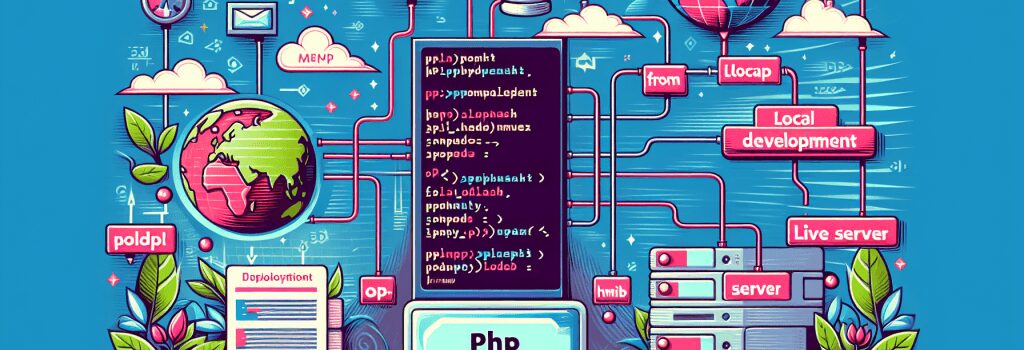PHP Deployment: From Local Development to Live Server

If you’re reading this, congratulations! You have successfully traversed the treacherous plains of PHP development and emerged victorious, now ready to show off your shiny new website to the world. However, did you hear the news? Your sweet little PHP app is not fond of its cozy, local development environment anymore. It yearns to shine brightly on a live server, facing the big, wide virtual world. No worries though! We’re here to guide your PHP application, hand-in-hand, from a life behind localhost curtains, to embrace the spotlight on an actual server. Sounds intimidating? Buckle up my brave coders, because we’re about to dive deep into the realm of PHP Deployment!
A Gentle Introduction to Deployment
In real simple terms, deploying a website is akin to moving houses, but for your website. I bet you went through the whole ‘moving house’ rigmarole at least once in your life, right? You packing all your stuff (code), loading it onto a truck (the magical process of pushing your code), and finally, unpacking and arranging everything in your new house (the server). Voila, that’s PHP deployment for you!
Preparing for Deployment: Check Lists Exist for a Reason
Wouldn’t it be a disaster if after moving into your new home, you realized that you forgot to bring along your favorite toothbrush? To avoid such horrific scenarios, we make a checklist. It’s a good practice to create a pre-deployment PHP checklist as well to ensure that nothing gets left behind in the move.
Key Features – Package Them Up!
Always double-check that all your PHP features are working perfectly. This entails squashing all bugs and handling edge cases. Imagine buying a video game console only to discover it doesn’t power on. Heartbreaking, right? Don’t let your users experience this sadness.
Dress to Impress: Website Appearance Matters!
Ensure your CSS files are linked correctly, your website is mobile responsive, and none of the elements appear broken. You wouldn’t wear a Halloween costume to a job interview, would you? Similarly, your website needs to look good to create a strong first impression.
The Moving Process: From Local to Live
Let’s get down to business and discuss how we shift our PHP website onto a live server.
Uploading Files – The Heavy Lifting
Using an FTP (File Transfer Protocol) client, all your PHP files should be uploaded to the server. Imagine an FTP client is like a giant, muscular mover who does all the heavy lifting while you sit back and sip your coffee.
Establishing the Database Connection – Like Calling Home
Once files are uploaded, you need to establish a database connection on the live server. Remember to update your database credentials. It’s like changing your home address when you move – otherwise, you wouldn’t get any pizza deliveries at your new place!
Testing – Unpacking & Arranging
Finally, test all functions and features of the website, ensuring everything is working as expected. Congratulations! You’re now the proud owner of a live PHP website.
It’s okay if this process seems overwhelming at first. Remember, Rome wasn’t built in a day, and neither was any PHP website. So take your time, keep practicing, and you’ll be a deployment pro before you know it.
Happy coding – and deploying!


